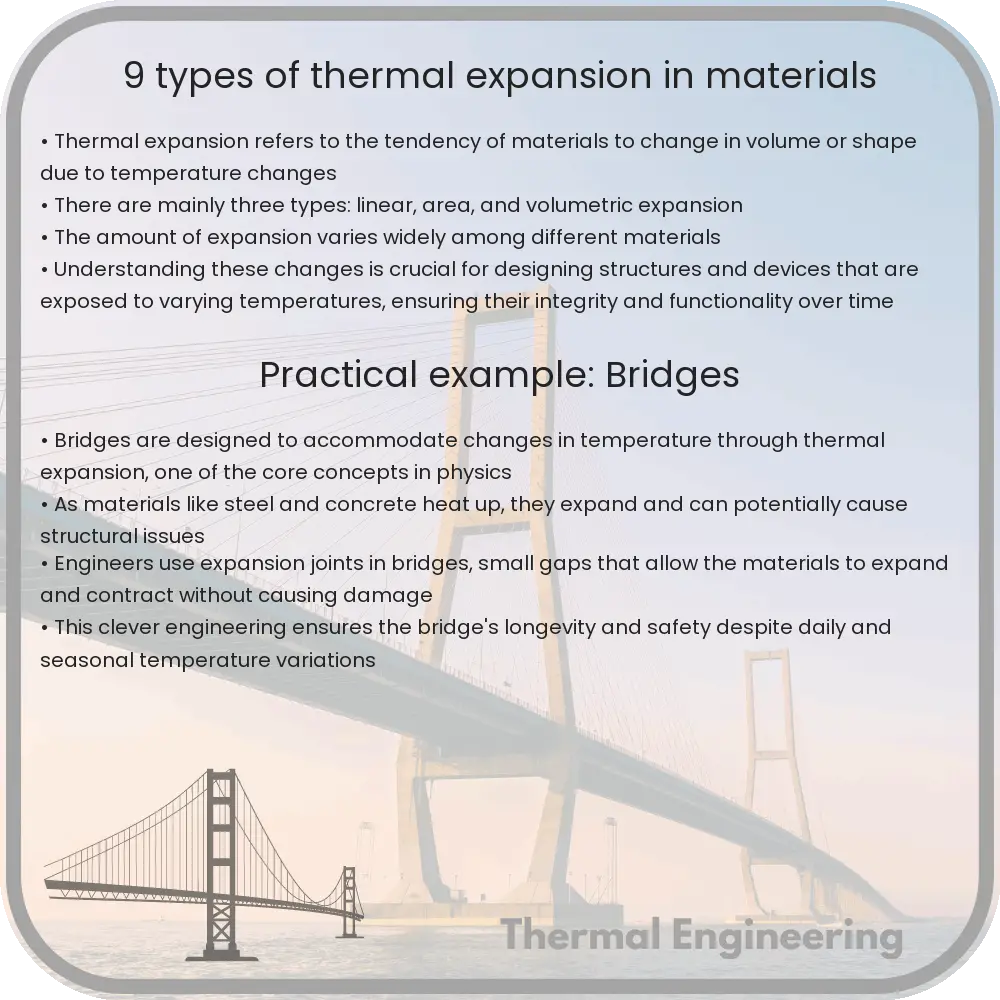Learn about thermal expansion, the process by which materials change in size with temperature fluctuations, key in many engineering and construction applications.

Understanding Thermal Expansion in Materials
Thermal expansion refers to the way in which a material changes in shape, area, and volume in response to a change in temperature. This physical process is critical in engineering and construction, as it affects everything from the structural integrity of buildings to the performance of mechanical systems. Different materials exhibit different types of thermal expansion, and understanding these variations is key to selecting the right material for a specific application. Here, we will explore nine types of thermal expansion commonly observed in materials.
Types of Thermal Expansion
- Linear Expansion
Linear expansion refers to the change in length of a material as it heats up. Most materials expand linearly with an increase in temperature, and this is quantified by the linear expansion coefficient, typically denoted as α. The change in length (ΔL) can be calculated using the formula:
ΔL = α * L0 * ΔT
where L0 is the original length and ΔT is the temperature change. - Area Expansion
As materials heat up, not only do their lengths change, but their surface areas increase as well. This phenomenon is known as area expansion. The change in area (ΔA) can be expressed as:
ΔA = 2α * A0 * ΔT
where A0 is the original area. This type of expansion applies primarily to two-dimensional surfaces. - Volume Expansion
Volume expansion is the change in volume of a material due to temperature increase. It is particularly relevant for liquids and gases but occurs in solids as well. The change in volume (ΔV) can be estimated by:
ΔV = β * V0 * ΔT
where V0 is the original volume and β is the coefficient of volume expansion, typically around three times the linear expansion coefficient for solids. - Anisotropic Expansion
In anisotropic materials, the rate of expansion varies depending on the direction. This is often seen in crystals and composite materials, where the molecular structure influences how the material expands in different directions.
- Isotropic Expansion
Contrary to anisotropic expansion, isotropic expansion occurs uniformly in all directions. Many metals and glass exhibit isotropic behaviors when subjected to temperature changes.
- Negative Thermal Expansion
Some materials exhibit a decrease in volume with an increase in temperature. This unusual behavior, known as negative thermal expansion (NTE), is rare but can be observed in materials like zirconium tungstate (ZrW2O8).
- Superficial Expansion
This type of expansion refers to the increase in the surface dimension of a material. It is a broader category that includes any form of expansion affecting the surface, including both linear and area expansions.
- Moisture Induced Expansion
Although not strictly due to thermal effects, moisture induced expansion is temperature related as it involves the expansion of a material due to absorption of moisture, which can be influenced by temperature. This is particularly significant in materials like wood and concrete.
- Bimetallic Expansion
Seen in bimetallic strips used in thermostats, this type of expansion occurs when two metals expand at different rates under thermal stress, causing the material to bend. The curvature can be used to convert temperature changes into mechanical displacement.
Each type of thermal expansion has its own set of challenges and applications in engineering and design. By understanding these different types, engineers can make informed decisions when choosing materials for construction, manufacturing, and other industrial applications, ensuring safety, efficiency, and performance under varying environmental conditions.